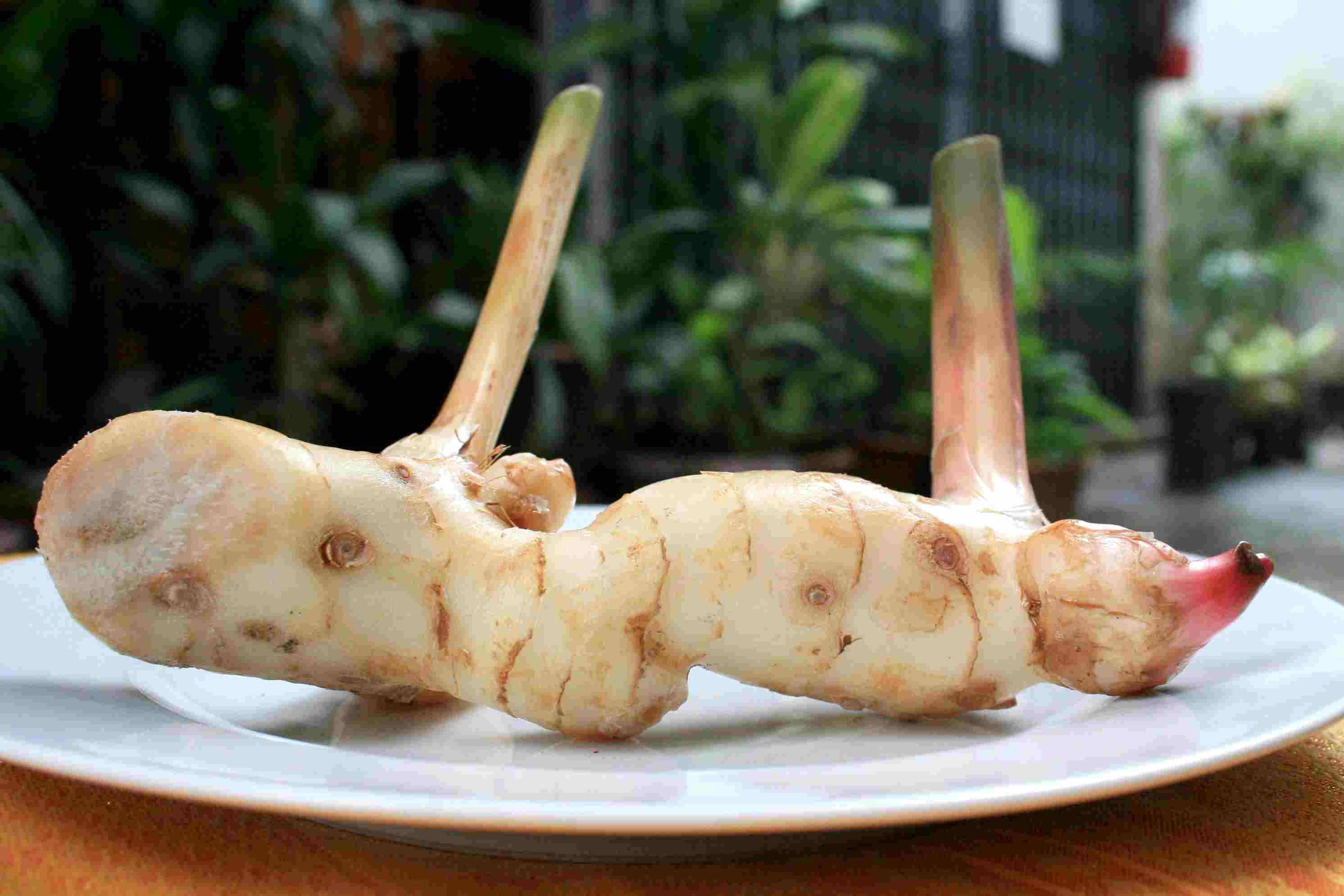
Galangal, also known as Thai Ginger, has both culinary and medicinal uses. In its raw form, galangal has a citrusy, earthy aroma, with hints of pine and soap in the flavor. It is available as a whole root, cut, or powdered. A mixture of galangal and lime juice is used as a tonic in parts of Southeast Asia. It is said to have the effect of an aphrodisiac, and acts as a stimulant. The name galangal is derived from the Arabic Khalanjan, perhaps a variation of a Chinese word for mild ginger. It has been known in Europe for seven centuries longer than its botanical origin, for it was only recognized in 1870, when specimens were examined that had been found near Tung-sai, in the extreme south of China.
Galangal, also known as galangha, is a plant that belongs to the ginger family, and it is popularly used in many Southeast Asian countries such as Thailand, Malaysia, Indonesia, and Vietnam for its medicinal benefits, as well as to add flavor to dishes. The rhizome of the plant has a unique fragrance and a distinctively spicy, slightly sweet taste, and it is an essential ingredient in many traditional dishes like curries, soups, and sauces.
The scientific name of galangal is Alpinia galanga, and it is a herbaceous perennial plant that can grow up to six feet tall. It has tough, fibrous stems and long, blade-like leaves that grow in sets of two, creating a lush, bushy appearance. While the plant is native to Indonesia and Southeast Asia, it is also widely cultivated in other tropical regions around the world.
Galangal has been used in traditional and herbal medicines for centuries and has a long history of medicinal use in Asia. Its roots have been used for treating various ailments such as stomach aches, nausea, and even as an aphrodisiac. Additionally, its essential oil and extracts have been used topically to relieve pain, swelling, and arthritis.
Modern research has also shown that galangal contains many compounds that have anti-inflammatory, antioxidant, and antimicrobial properties. These compounds include gingerol, shogaol, flavonoids, tannins, and other polyphenols that help improve digestion, support immune health, and guard against free radical damage.
One of the most significant benefits of galangal is its role in supporting digestive health. Due to its carminative properties, it can help reduce gas, bloating, and indigestion. It also has anti-inflammatory properties that make it an effective herb for soothing gastrointestinal disorders, and protecting against ulcers.
Galangal is also known to be an excellent herb for supporting overall immune health. It can help boost the body's defenses, making it better equipped to combat invading pathogens. It also has potent antimicrobial properties that help fight off harmful microorganisms such as bacteria, yeast, and viruses.
In addition to the various health benefits, galangal is also popularly used as a spice in many Southeast Asian cuisines. Its spicy and slightly sweet flavor profile makes it a favorite ingredient in curries, soups, and stews. It is also used to flavor meat dishes, marinades, and sauces, and is a key ingredient in traditional dishes like Tom Kha Gai, a popular Thai soup made with coconut milk, chicken, lemongrass, and galangal.
Galangal is often compared to ginger due to its similar appearance and taste profile, but the two plants have distinct differences. While both have compounds that provide medicinal benefits, galangal has a more complex flavor that is slightly sweeter and has a subtle note of citrus. It also has a denser texture and is harder to chop than ginger.
When purchasing galangal, look for firm, unblemished rhizomes that are free of any soft spots or mold. The rhizomes can be stored in the refrigerator for up to a week and can also be frozen or dried for later use.
Galangal is a unique and versatile herb that has been used for centuries for its medicinal and culinary benefits. Its active compounds offer a variety of health benefits, including support for digestive, immune, and inflammatory health. Whether used in traditional medicine or as a spice in cooking, galangal continues to be a cherished ingredient in Southeast Asian cultures and is becoming more popular throughout the world.